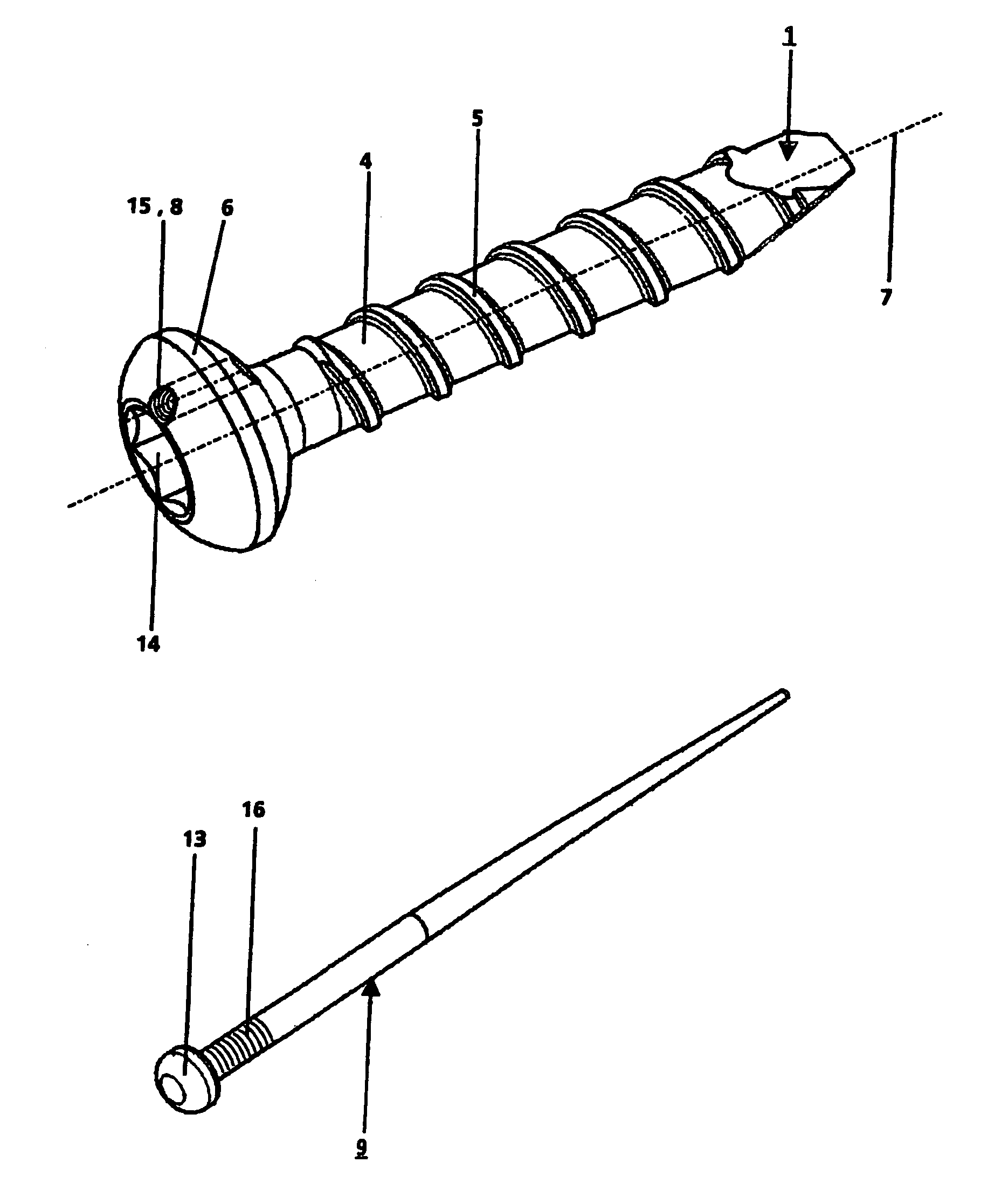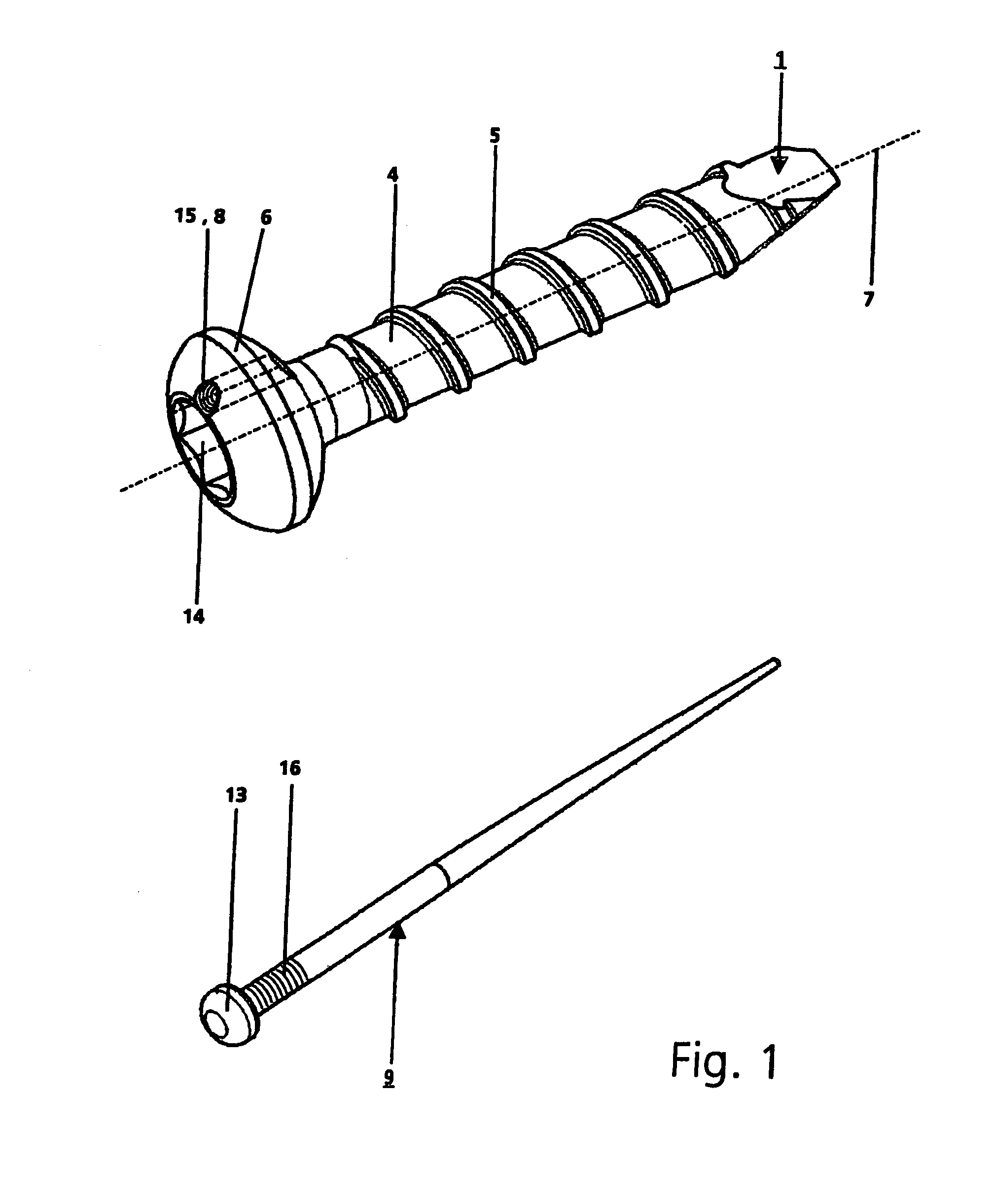Locking screw for an intramedullary nail
a locking screw and intramedullary technology, applied in the field of orthopaedic implants, can solve the problems of preventing or reducing the success rate of healing, and affecting the healing effect of the nail
- Summary
- Abstract
- Description
- Claims
- Application Information
AI Technical Summary
Benefits of technology
Problems solved by technology
Method used
Image
Examples
Embodiment Construction
[0034]The locking screw 1, shown in FIG. 1, is used for locking an intramedullary nail 2, which is shown in FIG. 2 and has several transverse boreholes 3. The locking screw 1 has a central longitudinal axis 7 and comprises a screw shaft 4, which is provided with an external thread 5, as well as a screw head 6, with a hexagonal socket 14, in order to be able to turn the locking screw 1 in one of the transverse boreholes 3 of the intramedullary nail 2.
[0035]The diameter of the screw head 6 is larger than the external diameter of the external thread 5, the screw head 6 having a passage 8 in the form of a circular borehole, which extends essentially parallel to the longitudinal axis 7 and to the external thread 5 and has an internal thread 15 for accommodating a longitudinal wedging element 9 in the form of a conically extending nail with a partial external thread 16 and a stop 13 at the head, the external thread 16 corresponding to the internal thread 15. The wedging element 9 has a le...
PUM
 Login to View More
Login to View More Abstract
Description
Claims
Application Information
 Login to View More
Login to View More - R&D
- Intellectual Property
- Life Sciences
- Materials
- Tech Scout
- Unparalleled Data Quality
- Higher Quality Content
- 60% Fewer Hallucinations
Browse by: Latest US Patents, China's latest patents, Technical Efficacy Thesaurus, Application Domain, Technology Topic, Popular Technical Reports.
© 2025 PatSnap. All rights reserved.Legal|Privacy policy|Modern Slavery Act Transparency Statement|Sitemap|About US| Contact US: help@patsnap.com



